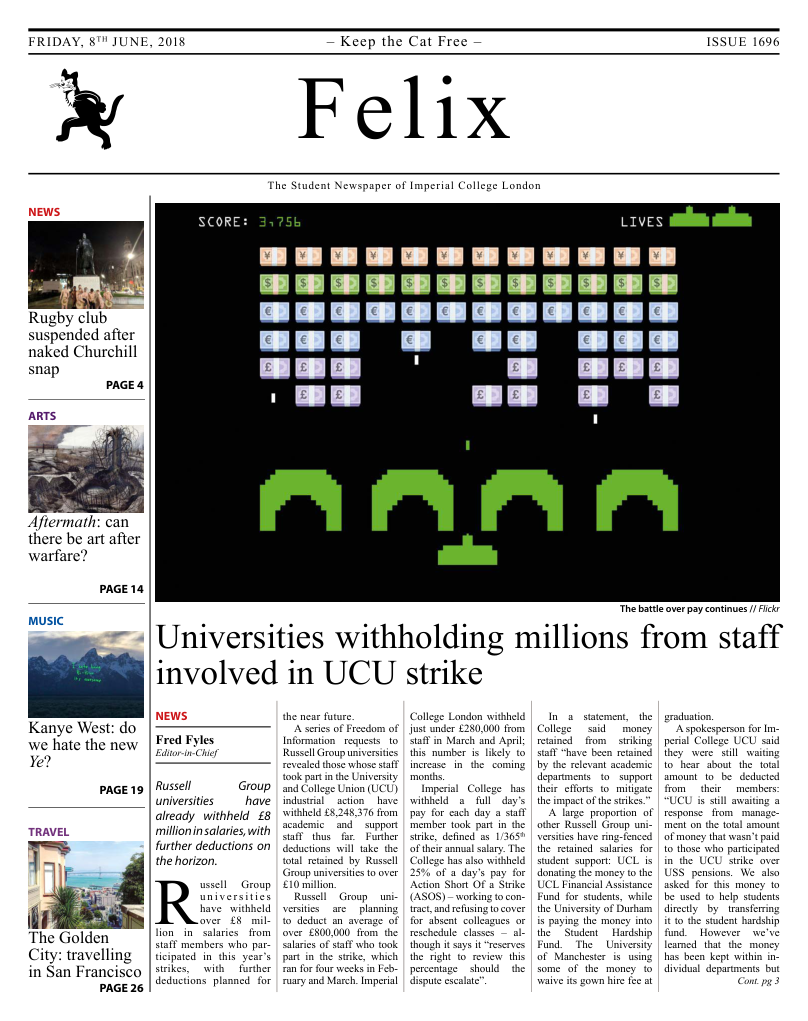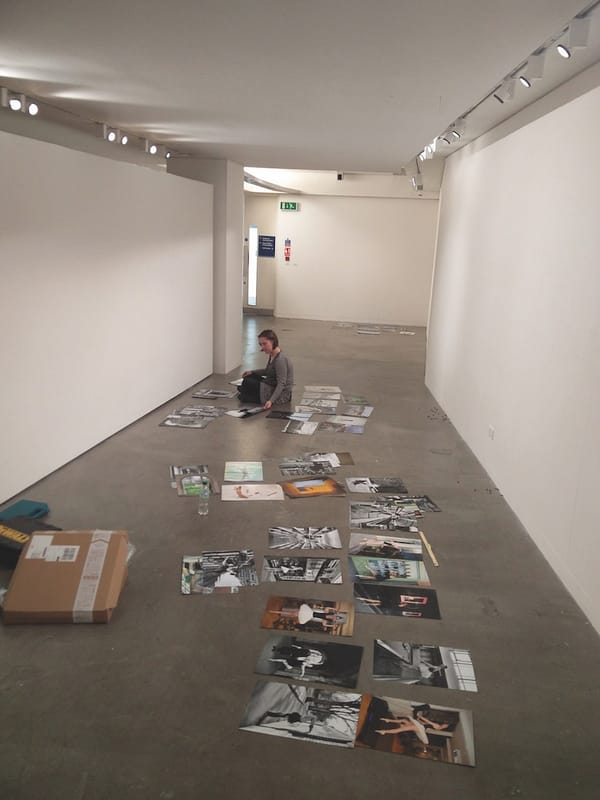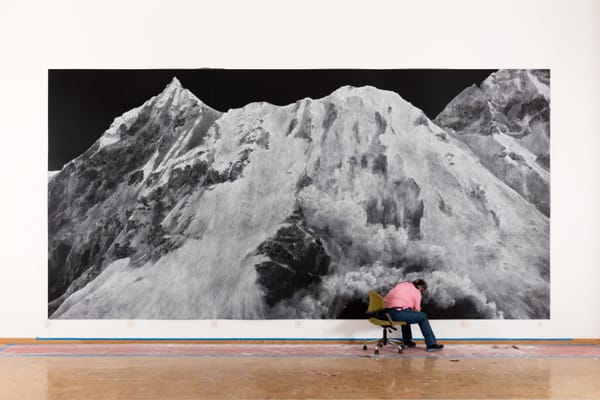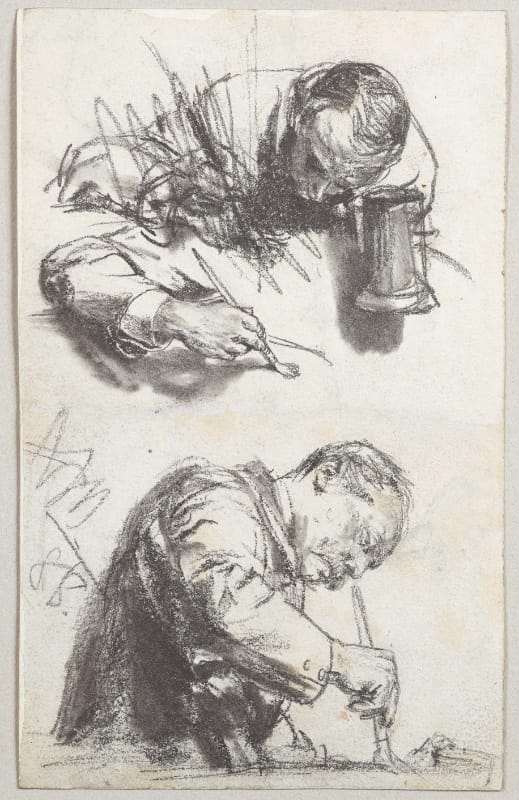Can there be art after warfare?
The Tate Britain’s new show does a good job looking at how WWI impacted artists, but falls apart at the end.
Aftermath, the title of the Tate Britain’s new exhibition, which looks at art produced in Europe after World War One, was originally an agricultural term. It described the growth of grass and other plants that followed a harvest – the sweeping away of the old creating a space in which the new could develop and blossom. It’s an appropriate choice: the outpouring of violence and horror that occurred within WWI paved the way for a completely different society, one explored by artists in a heady combination of jingoism, misery, and powerful imagery.
The exhibition begins with the War still ongoing, featuring artists from France, Germany, and the UK who had gone abroad to document the destruction. While this generation of artist-soldiers may have been fighting for different sides, with radically different outlooks, they all recognised the horrific waste of war, with the abandoned helmet coming to represent loss across all three countries.
If the First World War had an official form of painting, it could be called the ‘anti-landscape’ – a reflection of the way shells and mines churned up the beautiful French countryside, leaving it pockmarked and hollow. Charles Sims’ vast landscape of trenches stretches along one wall of the gallery; its tumultuous topography looks like a vast wave of sea foam, with corrugated iron and crosses sticking out like the carapaces of crustaceans. It contrasts beautifully with William Orpen’s delicate oil painting of the trenches, which is almost bucolic in its radiance. Elsewhere, Paul Nash’s ‘Wire’ features a mutilated tree, surrounded by whorls of barbed wire that appear like horrific gashes on the canvas.
The room is watched over by a pair of incredible sculptures: Jacob Epstein’s vulnerable ‘Rock Drill’, truncated and de-limbed, becoming a figure of pitiful vulnerability; and Wilhelm Lehmbruck’s ‘Fallen Man’, whose elongated limbs convey the horrific anguish of warfare. Lehmbruck, who committed suicide in 1919 following military service as a paramedic, was clearly keenly attuned to the dehumanising effects of warfare, and this work crackles with an energy akin to Käthe Kollwitz’s ‘Mother with her Dead Son’. Both works connect beautifully with George Grosz and John Heartfield’s dadaist work, ‘The Middle-Class Philistine Heartfield Gone Wild’, whose mutilated mannequin highlights the treatment of veterans in post-war Europe.
The interaction between artists and governments is also interestingly explored: Charles Sargeant Jagger’s sculptures commemorating those who died in the Royal Artillery and Great Western Railway contain a tension that spills out in his great tableau of a scene of a sentry in No Man’s Land, which is horrific in its violence. A nearby Hindenburg Cross, awarded by the Nazis as part of their mission to reconfigure the memories of WWI, shows how art and sculpture can be used for propaganda purposes, which is reinforced by Andre Maré’s vulgar monument to the French war dead. As well as scars on the land, WWI left its impact on the terrain of both the body and the psyche. English works depicting facial wounds obtained by soldiers, produced for medical purposes, contrast with Grosz’ and Otto Dix’s brilliantly-unsettling caricatures of crippled soldiers, which are pure nightmare fuel, and contain a powerful political message. Conrad Felixmuller’s lithographs of soldiers in psychiatric hospitals bristle with an unsettling energy, reminiscent of something out of The Cabinet of Dr Caligari.
These dark visions are revisited in the centerpiece of the exhibition: a darkened room containing works from print series by Otto Dix, Max Backman, Kathe Kollwitz, and Georges Rouault. The prints, which are all from series the artists produced, are incredibly poignant, taking us through the full gamut of war, from violence to horror to grief. Kollwitz’s prints retain their numbing, tumultuous power, centring on the women and children who were left behind.
After this point, however, the exhibition starts to lose its narrative thread. The curators make the decision to focus on artists exploring the impact the war had on society at large. The issue with this is that the war was so large – there is a reason it was called the Great War – that any art produced post-WWI could be said to have an impact on artists. Yes, the works by Winifred Knights and Meredith Frampton are beautiful, as are the classical studies by Picasso and Derain, but how are they really related to the First World War, other than by virtue of being produced post-1918?
As the final section moves towards the Bauhaus, the decision to only include artists from the UK, France, and Germany comes to seem strange – these weren’t the only countries affected by the war, and by bringing in art by Oscar Schlemmer and others the choice to exclude Russian artists, who were hugely influential throughout Europe, becomes a striking omission.
By turns heart-rending and frustrating, Aftermath is worth going to for the prints section alone. The power of works by the German artists isn’t quite enough to sustain the exhibition through the latter half – where the tight curation begins to unravel – but Aftermath shows us how beauty can be obtained even through tragedy.
Aftermath: Art in the Wake of World War One
3 Stars
Where? Tate Britain When? Until 23rd September How Much? £16; students £15










